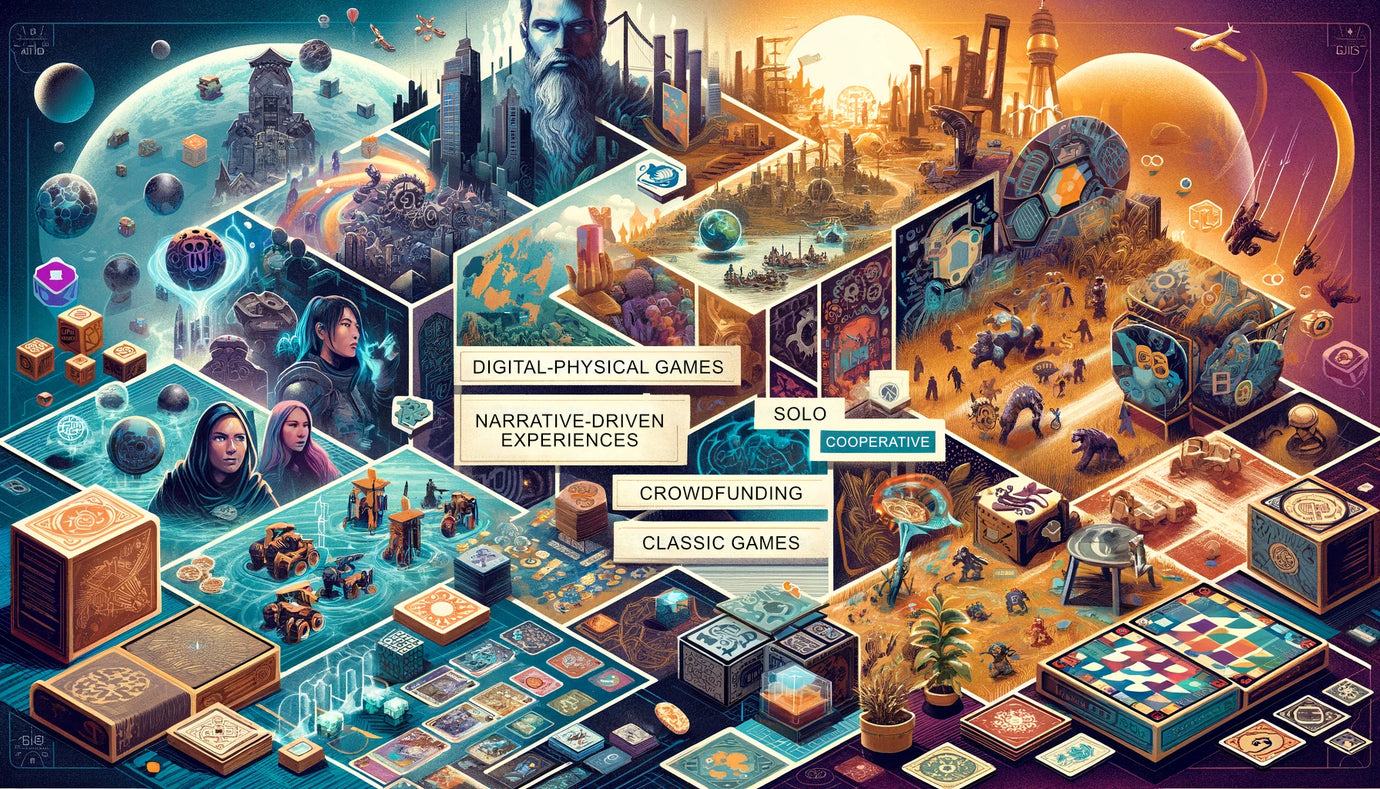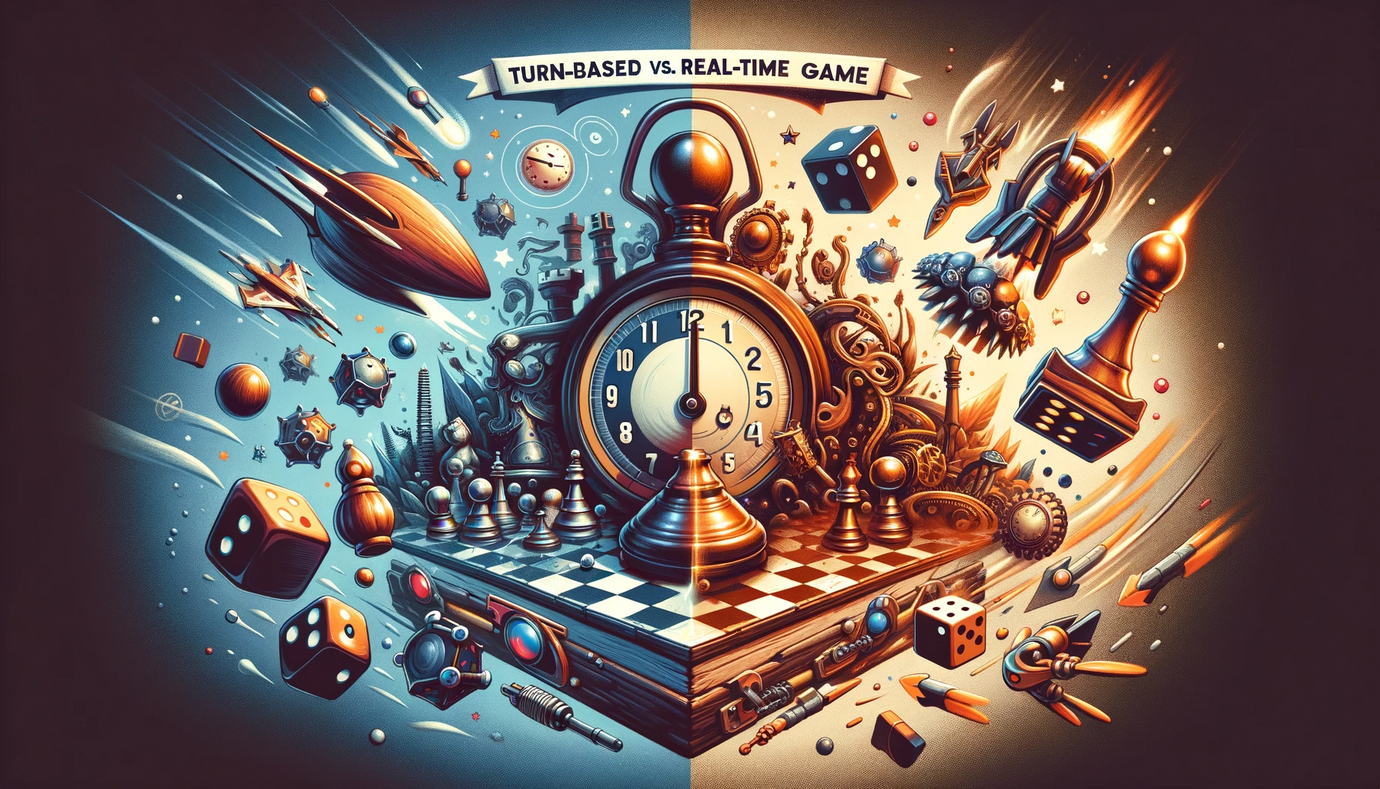Designing Games That Tell a Story

Introduction
In the world of board and card games, storytelling can be a powerful tool, transforming a collection of mechanics and rules into an immersive narrative journey. A game that successfully tells a story can engage players on a deeper level, creating memorable experiences and a strong emotional connection. This blog post will explore the art of designing games that effectively tell a story, blending narrative elements with game mechanics to captivate and enchant players.
Understanding the Role of Storytelling in Games
Storytelling in games is about more than just setting a theme or backdrop; it’s about creating a narrative that players can influence and become a part of. It involves integrating story elements so seamlessly that players feel like active participants in the unfolding tale.
1. Starting with a Strong Narrative Concept
Define the Core Story: Begin by defining the central narrative of your game. What story do you want to tell? Is it a tale of adventure, mystery, survival, or conquest?
Creating a Compelling Setting: Develop a rich and detailed game world that can support your narrative. This setting will be the foundation upon which your story is built.
2. Integrating Story with Mechanics
Narrative-Driven Mechanics: Design game mechanics that naturally reinforce and progress the story. For example, in a detective game, players could gather clues and solve puzzles as part of the narrative.
Player Choices and Consequences: Allow player decisions to impact the story. This can create a dynamic narrative that feels personal and unique to each playthrough.
3. Developing Characters and Plot
Memorable Characters: Create characters that are integral to the story. Give them depth, motivations, and development arcs that players can relate to and influence.
Plot Progression: Structure the game so that the plot progresses in a meaningful way. This can be linear or branching, depending on the level of player agency you wish to incorporate.
4. Crafting an Immersive Atmosphere
Thematic Consistency: Ensure all elements of the game, from artwork to mechanics, contribute to the overall atmosphere and narrative.
Sensory Experience: Use visual and tactile components to enhance the storytelling. High-quality illustrations, thematic pieces, and even game materials can all add to the immersive experience.
5. Using Mechanics to Tell the Story
Storytelling Through Gameplay: Design gameplay elements that naturally tell the story. This can be through events, challenges, or conflicts that align with the narrative.
Dynamic Story Elements: Introduce mechanics that allow the story to change and evolve, such as modular boards, branching storylines, or variable player objectives.
6. Balancing Narrative and Gameplay
Avoid Overcomplexity: While a rich story is valuable, ensure it doesn’t overshadow the gameplay. Find a balance where the narrative enhances rather than complicates the gaming experience.
Pacing: Manage the pacing of both the narrative and gameplay. The story should unfold at a pace that keeps players engaged but doesn’t overwhelm them.
7. Encouraging Player Engagement and Role-Playing
Role-Playing Opportunities: Encourage players to take on the roles of their characters. This can be facilitated through narrative choices, character-specific abilities, and moral dilemmas.
Player Contribution to the Story: Allow space for players to contribute their own ideas and interpretations to the story. This can increase engagement and investment in the game.
8. Iterative Design and Playtesting
Narrative Playtesting: Test how well the narrative and mechanics work together. Is the story engaging? Do players feel a part of it?
Iterative Story Development: Use feedback from playtesting to refine the narrative elements. The story should evolve and improve through multiple iterations.
9. Effective Use of Text and Narrative Elements
Writing Quality: Ensure that any written narrative elements, like flavor text or story passages, are well-written and engaging.
Balanced Text Usage: Be mindful of the amount of text. Too much reading can detract from the gaming experience.
10. Finalizing the Narrative Experience
Polishing the Story: Once the narrative elements are thoroughly tested and refined, finalize the story. Ensure it’s coherent, engaging, and seamlessly integrated with the gameplay.
Consistency Check: Do a final review to ensure narrative consistency across all game components and materials.
Designing a game that tells a story is about creating an experience where narrative and mechanics are so intertwined that players feel an integral part of the unfolding tale. By focusing on strong narrative concepts, character development, immersive atmospheres, and player engagement, you can create a game that not only entertains but also tells a compelling story. Remember, a great story can transform a game from a mere pastime into a memorable journey and adventure.








